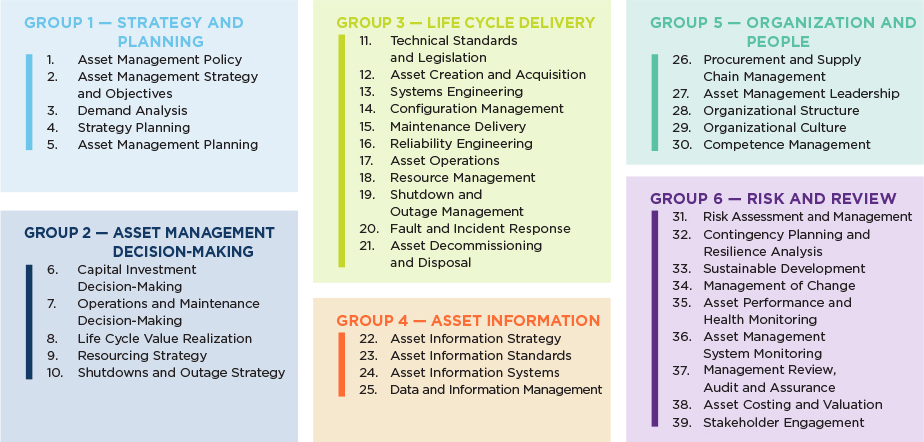Data and information management are important foundations for asset management. Data and the information gathered from it are key enablers for strategy and planning, decision-making, asset health and performance monitoring, and risk management. The data may be centralized or distributed, but it is important not to underestimate the value of the data and information held within an organization’s asset information systems. Doing so risks underestimating the importance and value of the processes for management and governance of that data and information.
To properly manage asset data, a comprehensive, accurate and timely picture is needed. This means identifying the various systems of record that house these data and information elements, since they cannot be found in a single place or system of record. Due to the specialized nature of work processes, highly specialized systems exist for every job function that touches each type of asset at various stages in its life cycle. Thus, some asset data — such as price, purchase date or vendor — might only exist in procurement systems. Other important aspects, such as sizing calculations or life expectancies, may be found in other specialized systems of record. Because various processes come into play through interaction with an asset on its way through the various corporate systems, information about an asset may be distributed over many systems.
Sampling rates and data intervals are important details of data items when it comes to prudently managing assets. Sampling rates need to be commensurate with business cases they are serving, and the range is vast. At one end are sampling rates in real time down to the nanosecond for issues connected to life protection or precise process controls. At the opposite extreme, an asset could have just one data point recorded during its lifetime.
Another data property that needs careful monitoring is data quality. Decisions are only as good as the quality of the data they are based on. Other examples are constant or proportional data offsets, where the actual value is “bent” by a problem with the sensor or its calibration. Yet even more harmful than offsets are the “crossed wires,” where the sensor or actuator and the user interface label associated with it are crossed. These instances are often difficult to recognize and track down.
Data ownership is closely associated with data and information governance. It is often falsely assumed that the IT organization is the owner of data. In most cases, the IT organization is the steward and guardian of the data but not the owner. Just like a bank keeps money safe but does not own it, IT collects and stores data but in many cases does not own it. The ownership of data should be associated with the operational organizational unit that produces and uses the data. With this ownership comes responsibility for the accuracy and timeliness of the produced and transmitted data. A proper data or information governance process and the associated governance bodies are best practices to properly address this aspect of data.




